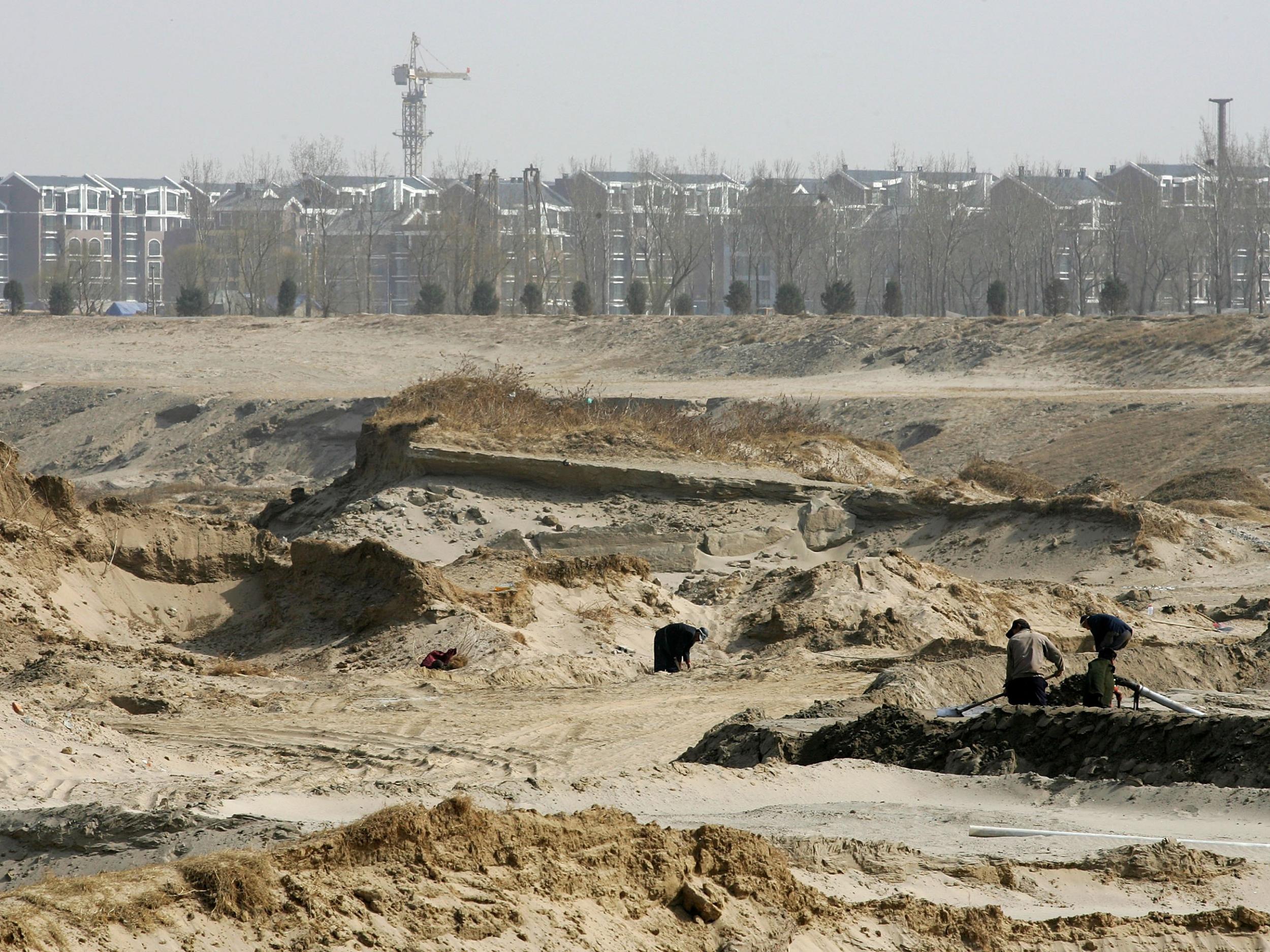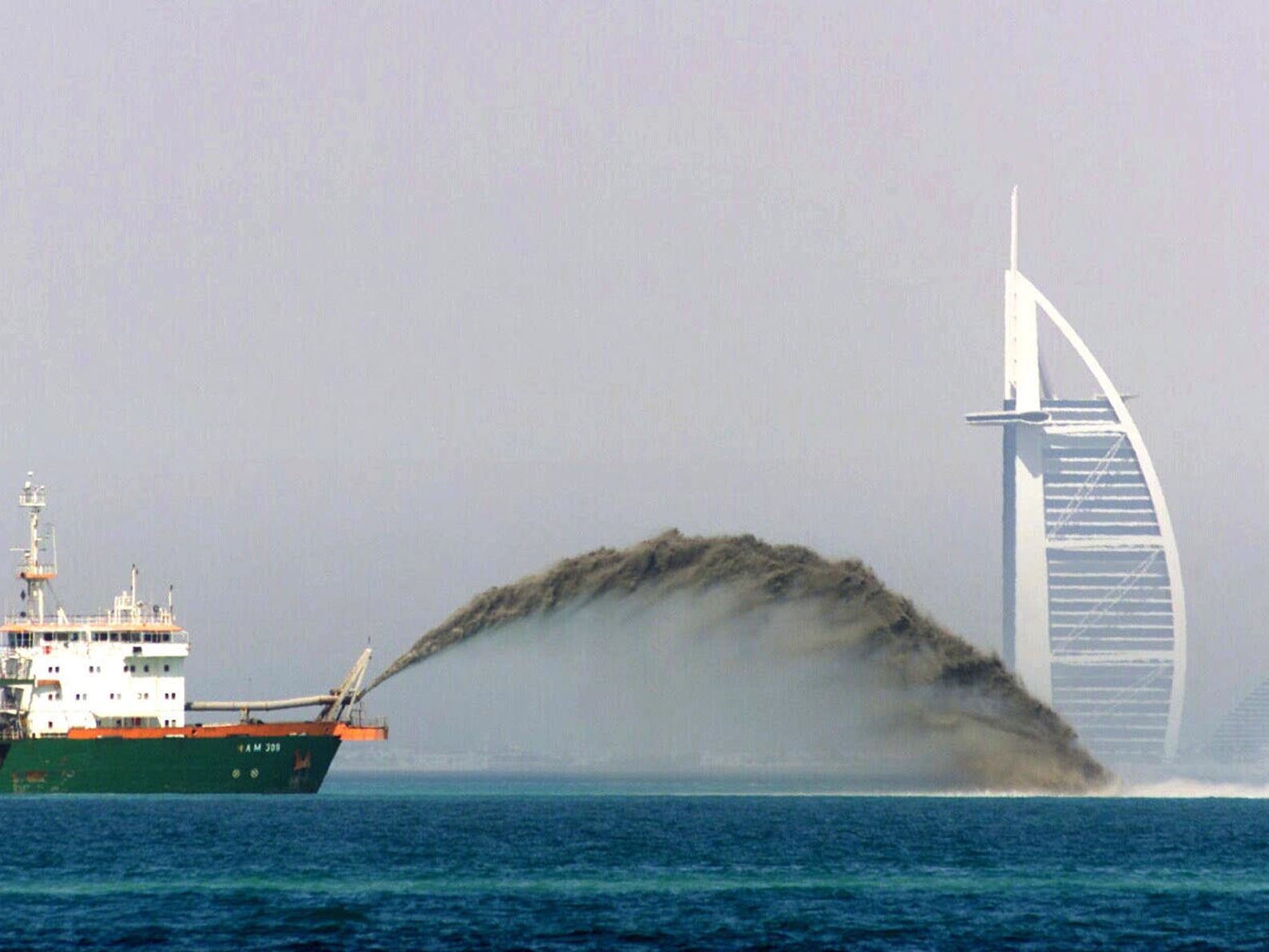Sand mafias and vanishing islands: How the world is dealing with the global sand shortage
The growing scarcity of sand in parts of the world is a serious issue, and one that has been linked with everything from organised crime to natural disasters

Your support helps us to tell the story
From reproductive rights to climate change to Big Tech, The Independent is on the ground when the story is developing. Whether it's investigating the financials of Elon Musk's pro-Trump PAC or producing our latest documentary, 'The A Word', which shines a light on the American women fighting for reproductive rights, we know how important it is to parse out the facts from the messaging.
At such a critical moment in US history, we need reporters on the ground. Your donation allows us to keep sending journalists to speak to both sides of the story.
The Independent is trusted by Americans across the entire political spectrum. And unlike many other quality news outlets, we choose not to lock Americans out of our reporting and analysis with paywalls. We believe quality journalism should be available to everyone, paid for by those who can afford it.
Your support makes all the difference.Sand seems like a limitless resource, but mounting evidence suggests this is far from the case.
We use sand as a key ingredient in the production of glass, electronics and – most importantly – concrete, but the growing need for construction materials means in some parts of the world, supplies of sand are dwindling rapidly.
Sand and gravel are now the most extracted materials in the world by weight, and since these products take thousands of years to form by erosion, demand is beginning to outstrip supply.
The United Nations Environment Programme estimated that in 2012 the world used nearly 30 billion tons of these materials just to make concrete – enough to construct a wall 27m high by 27m wide around the equator.
While much has been made of the impact infrastructure developments such as roads and buildings have on the surrounding environment, little attention has been paid to the impact of extracting raw materials such as sand to build that infrastructure.
As scientists wake up to this new problem, it is becoming clear that sand scarcity is an issue with significant sociopolitical, economic and environmental implications.

Dr Aurora Torres, an ecologist at the German Centre for Integrative Biodiversity Research, is one of a handful of scientists investigating this issue.
Two years ago she began to research sand scarcity in depth, and soon found the problem was far bigger than she initially thought.
“As we were digging into this topic, we started to find lots of conflict across the world, and lots of evidence that sand is becoming increasingly scarce – especially this year,” says Torres.
Torres and her collaborators outlined their findings in a recent paper in the journal Science titled “A looming tragedy of the sand commons”.
Historically, sand has been a common-pool resource extracted and used locally. But a combination of regional shortages, increased regulation and appreciation of sand mining’s environmental impact has turned sand from a local product into an expensive, globalised commodity.
The trade value of sand has increased by almost six fold in the last 25 years. In the US alone, where sand production has increased by 24 per cent in the past five years, the sand industry is worth nearly $9bn (£6.7bn).
Though sand extraction rates are high across Europe and North America, the biggest consumers of sand are fast-growing Asian nations.
“Where it tends to happen is India, China, places where you have rapid and large amounts of construction,” says Dr John Orr, an engineer and expert in concrete structures at the University of Cambridge.
Singapore, meanwhile, has become by far the world’s largest importer of sand, adding 130 square kilometres to its land area over a 40 year period. The island nation has achieved this by dumping millions of tons of sand into the ocean.
As these countries expand, constructing endless roads and megacities, their demand for sand continues to grow. So enormous is China’s appetite for construction, in fact, that between 2011 and 2013 it used more concrete than the US got through in the entire 20th century.
This means that, at national and local levels at least, these regions are facing a genuine sand shortage. According to Pham Van Bac, director of Vietnam’s Department of Construction Materials, the country may well run out of sand by 2020.
Moreover, as sand becomes big business, the sand trade has attracted criminals.
“Because sand has suddenly become a very valuable resource, ‘sand mafias’ have appeared operating the sand mining business,” says Torres. This problem has been particularly noted in India, but according to Dr Pascal Peduzzi in a UN report titled “Sand, rarer than one thinks”, illegal sand mining operations have become widespread thanks to weak governance and corruption.

“In the past year there have been hundreds of people murdered because of conflicts between sand mafias,” says Torres.
Despite this alarming turn of events, it is still difficult to imagine how sand can be in short supply when the world’s deserts apparently contain a never-ending supply of the stuff.
But not all sand is created equal. The fine grained sand of the Sahara, for example, does not make an appropriate building material. Instead, sand miners must look to the banks of local rivers and coastlines, and this brings a whole host of environmental and human problems.
Sand extraction in Kenya has been linked with damage to coral reefs, while in India it threatens critically endangered crocodiles and in Indonesia islands have literally vanished due to excessive mining.
Sand extraction causes coastal erosion, destroys ecosystems, creates environments that facilitate disease transmission, and even sows the seeds for natural disasters.
“One of the more clear impacts on human systems is the increased vulnerability to natural hazards such as storms and tsunamis,” says Torres. This has been demonstrated in Sri Lanka, where research has revealed that intensive sand mining prior to the 2004 tsunami made the waves more devastating than they otherwise would have been.
“The beaches disappeared, and so there was no natural barrier stopping the flooding,” says Torres.
Sand’s common-pool status has made it difficult to monitor or control its extraction. Nevertheless, with such potentially catastrophic outcomes, some nations are under pressure to regulate their sand mining.
Earlier this year, the California Coastal Commission made moves to end coastal sand mining in the US by closing down operations in the Monterey Bay area that have been linked with beach erosion. Lieutenant Governor Gavin Newsom, who participated in the talks to end mining, described the resulting agreement as “an historic victory for environmental conservation nationwide”.
But where will the US, and other developed nations that are becoming squeamish about sand mining, extract their building materials if not from their own land? One option increasingly being used in the UK is to mine sand from the sea floor. Another is to import sand from elsewhere.
When she first heard about the scarcity of sand, Dr Mette Bendixen, a coastal morphologist at the University of Copenhagen, thought immediately of her work investigating how the coast of Greenland responds to climate change.
“Because of the warming temperatures we have melting of the Greenland ice sheet, and with that melt comes huge amounts of sand and gravel,” she says.
For Greenland, Bendixen thought, exporting sand could be a way to develop an economy that is in need of a boost. She envisioned a burgeoning industry that would enable the people of Greenland to become independent from the Danish subsidies they currently rely on, all thanks to sand.
But sand is heavy, and expensive to transport long distances. What’s more, whether sand is extracted from the sea bed or from Greenland, the environmental issues are simply being shifted elsewhere.
As outcry about the effects of sand mining increases in countries like India, pressure is mounting to find alternatives for use in construction.
Recycling concrete by crushing it down into rubble is a possibility, but not one that works for rapidly developing countries that lack the old infrastructure to tear up.
Finding sand alternatives is another option, but a complicated one. Sand is a special material because it has historically been so abundant and cheap. Producing a replacement with those qualities is difficult, but projects are under way to produce such a material.

Orr was enlisted to help with just such a project back in 2014, when Indian researchers based in Goa approached him to work on an initiative that would address two of their country’s most pressing concerns: the lack of sand and the abundance of waste plastic.
“The idea they had was: why don’t we use some of this waste plastic, shred it up and make it into the right sized particles to make concrete,” says Orr.
“We ended up using plastic sand essentially, which is actually a by-product of recycling industry procedures. They shred up plastic, and that can be put into the concrete mixtures,” he says.
Besides plastic, wood and various other concrete alternatives have all been suggested, but none have yet caught on in any significant way. Ultimately, as sand stocks diminish and prices soar, developers will be forced to find alternatives.
If sand scarcity is to be addressed in a serious way, those involved in the issue agree that a major challenge is making people aware that it is an issue in the first place.
“A large discrepancy exists between the magnitude of the problem and public awareness of it,” wrote Peduzzi back in 2014.
A recent up swell of interest has raised its profile since then, but Torres warns that this issue goes beyond a mere lack of sand. “The challenges we are going to face in mining of many different resources are not a matter of absolute abundance, or of scarcity,” she says. “It’s going to be more about the implications that this is having for climate change, environments and consequences for human systems.”
We are unlikely to completely run out of sand, but quite aside from the diminishing stocks the devastating impacts of sand mining mean this is no longer something that can continue unchecked.
Join our commenting forum
Join thought-provoking conversations, follow other Independent readers and see their replies
Comments